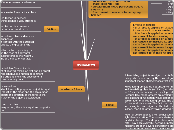DYNAMICS
Newton's 3 laws
Newton's third law:
for every action, there is a equal and opposite reaction.
Newton's second law:
the resultant force acting upon an object is equal to the product of the mass and the acceleration of the object; the direction of the force is the same as that of the object's acceleration.
When forces acting on an object are unbalanced, there will be a resultant force acting on an object.
Effects of unbalanced forces on an object:
- A stationary object will start moving.
- A moving object will move faster, slower, stop or change direction.
Newton's first law / law of inertia:
an object at rest will remain at rest and an object moving will continue it's motion at constant speed in a straight line in the absence of a resultant force acting on it.
When forces acting on an object are balanced, there is zero resultant force (i.e. object is at rest or travelling at constant speed).
Effects of balanced forces on an object:
- A stationary object will remain at rest.
- The moving object will remain at constant velocity (constant speed in a straight line).
Friction
- The frictional force between two surfaces on a horizontal plane depends on:
- the materials in contact with the surfaces; the rougher the surface, the greater is the friction.
- the propotional to the force pressing the surface together (in the case of horizontal movement, the pressing force is the weight).
- the independent of the area of contact.
- Friction can be a useful force or it can be a nuisance.
- Examples when friction is needed:
- Walking, leaning against a wall, striking a match...
- Examples when friction is a nuisance:
- Wear and tear of shoes and tyres...
- Friction is the contact force that opposes or tends to oppose motion between surfaces in contact.
Formula:
Resultant Force = Mass x Acceleration
F=ma
Horizontal motion:
F=forward force - friction
Upward motion:
F= upward force - downward force
Objects moving with constant speed have zero acceleration and zero resultant force.
Keywords:
- Friction
- Rough surface
- Smooth surface
- Constant speed
Freefall
A free falling object is an object that is falling under the sole influence of gravity. Any object that is being acted upon only by the force of gravity is said to be in a state of free fall. There are two important motion characteristics that are true of free-falling objects:
•Free-falling objects do not encounter air resistance.
•All free-falling objects (on Earth) accelerate downwards at a rate of 9.8 m/s/s (often approximated as 10 m/s/s for back-of-the-envelope calculations)
Because free-falling objects are accelerating downwards at a rate of 9.8 m/s/s, a ticker tape trace or dot diagram of its motion would depict an acceleration. The dot diagram at the right depicts the acceleration of a free-falling object. The position of the object at regular time intervals - say, every 0.1 second - is shown. The fact that the distance that the object travels every interval of time is increasing is a sure sign that the ball is speeding up as it falls downward. Recall from an earlier lesson, that if an object travels downward and speeds up, then its acceleration is downward.
Free-fall acceleration is often witnessed in a physics classroom by means of an ever-popular strobe light demonstration. The room is darkened and a jug full of water is connected by a tube to a medicine dropper. The dropper drips water and the strobe illuminates the falling droplets at a regular rate - say once every 0.2 seconds. Instead of seeing a stream of water free-falling from the medicine dropper, several consecutive drops with increasing separation distance are seen. The pattern of drops resembles the dot diagram shown in the graphic at the right.
Effects of forces:
- If a force is applied on a stationary object, it can cause it to start moving.
- If a force is applied on a moving object, it can cause it to stop moving.
- If a force is applied on a moving object, it can cause it to increase its speed.
- If a force is applied on a moving object, it can cause it to decrease its speed.
- If a force is applied on a moving object, it can cause it to change its direction.
- A force is a push or a pull that an object exerts on another object.
- Force has both magnitude (size) and direction.
- This makes force a vector quantity.
- SI Unit for force: newton (N)
- Mass: kilogram (kg)
- Acceleration: metre per second square (m/s^2)
- Instrument to measure force: spring balance

